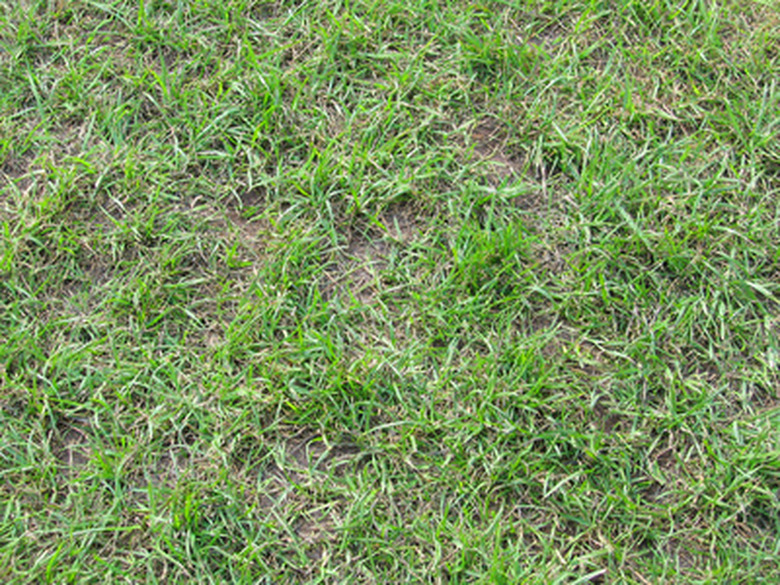How To Grow Bermuda Grass From Seed
Things Needed
- Shovel
- Rake
- Wheelbarrow
- Bermuda grass seed
- Compost
- Fertilizer
Bermuda grass is a warm season grass that requires soil temperatures above 65 degrees and ideally around 75 degrees for germination and healthy root growth. It is normally planted in the spring or early summer. This perennial grass grows well in tropical regions or in warm dry areas such as the southwestern United States, providing the lawn gets adequate water. Bermuda grass goes dormant in the winter and turns brown. Homeowners seeking green lawn year round often overseed the Bermuda with annual rye grass, which thrives in cooler temperatures.
Step 1
Turn your soil with a shovel to prepare it, going down 6 inches. Break up any compacted chunks.
- Bermuda grass is a warm season grass that requires soil temperatures above 65 degrees and ideally around 75 degrees for germination and healthy root growth.
- Homeowners seeking green lawn year round often overseed the Bermuda with annual rye grass, which thrives in cooler temperatures.
Step 2
Add nutrients, working compost deep into the soil if it does not have adequate organic material and adding fertilizer with the vital nutrients for turf growth—nitrogen, potassium and phosphorous.
Step 3
Rake the area carefully until it is smooth and level. Water can collect in areas that aren't level, washing the seeds away and causing uneven grass coverage.
Step 4
Use a push spreader to spread the Bermuda seeds. Spread in rows going in one direction, then go across those rows, forming a crisscross pattern and spreading the seeds. Lightly rake the seeds into the soil.
Step 5
Cover the seeds with a fine layer of topsoil, compost or mulch, around 1/8-inch thick and no more than 1/4 inch. This holds in moisture and protects seeds from damage from the hot sun, or dry wind.
- Add nutrients, working compost deep into the soil if it does not have adequate organic material and adding fertilizer with the vital nutrients for turf growth—nitrogen, potassium and phosphorous.
Step 6
Keep the seeds moist by watering lightly three to four times each day for short, 10- to 15-minute, intervals. Keep this schedule up for the first three weeks, until you notice the entire lawn area has germinated.
Tip
Loose soil allows air to circulate around the plant roots. Soil that drains well is essential for growing turf. Remove any large rocks, tree roots or other debris that could prevent the roots from establishing themselves. After the lawn is established, cut back on the frequency of watering but water more deeply, to encourage the root system to spread. Three pounds of Bermuda grass seed should adequately cover a 1,000 square foot area.
Warning
Be careful with the first mowing of your new lawn. Wait until the area has filled in with healthy grass. Make sure you only mow down to a height of 1 inch. Cutting the lawn shorter than that can cause the Bermuda grass to brown out.
References
- "The Lawn Bible: How to Keep It Green, Groomed, and Growing Every Season of the Year;" David R. Mellor; 2003
